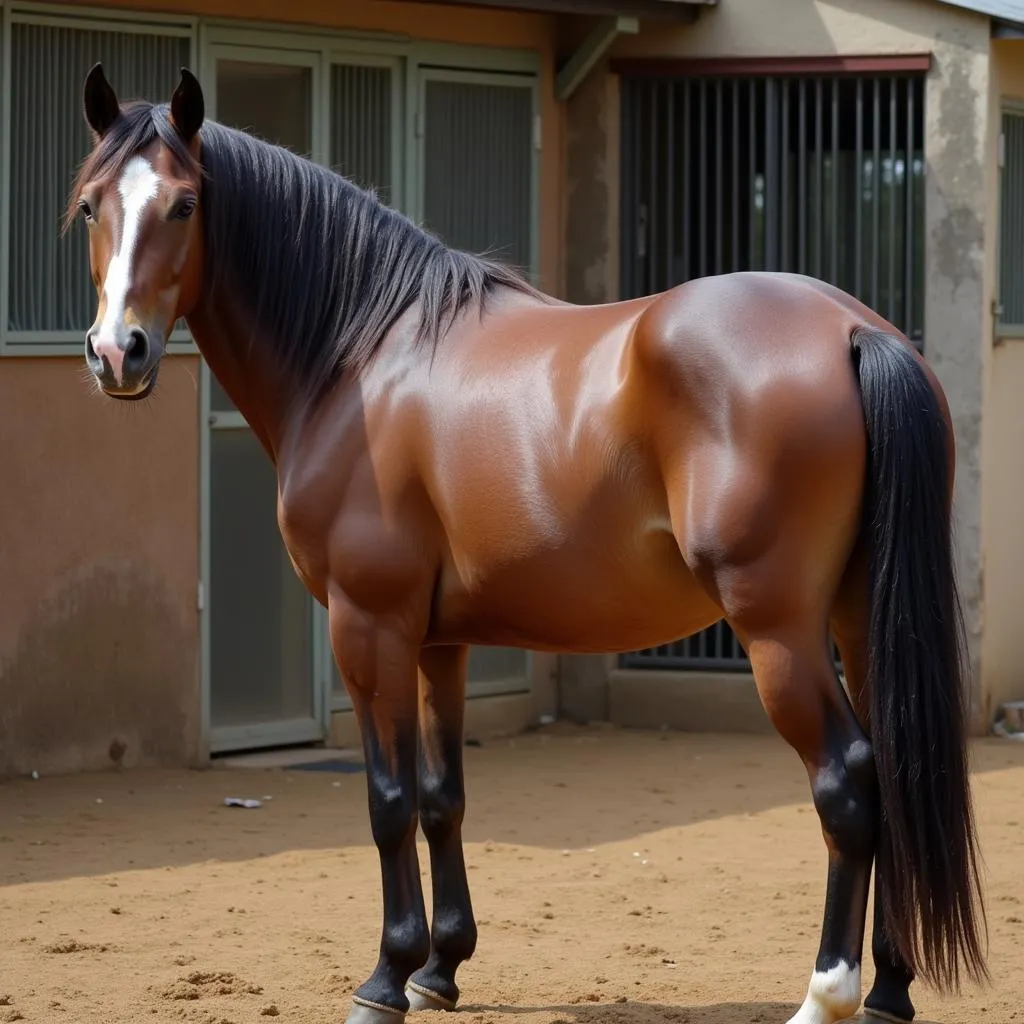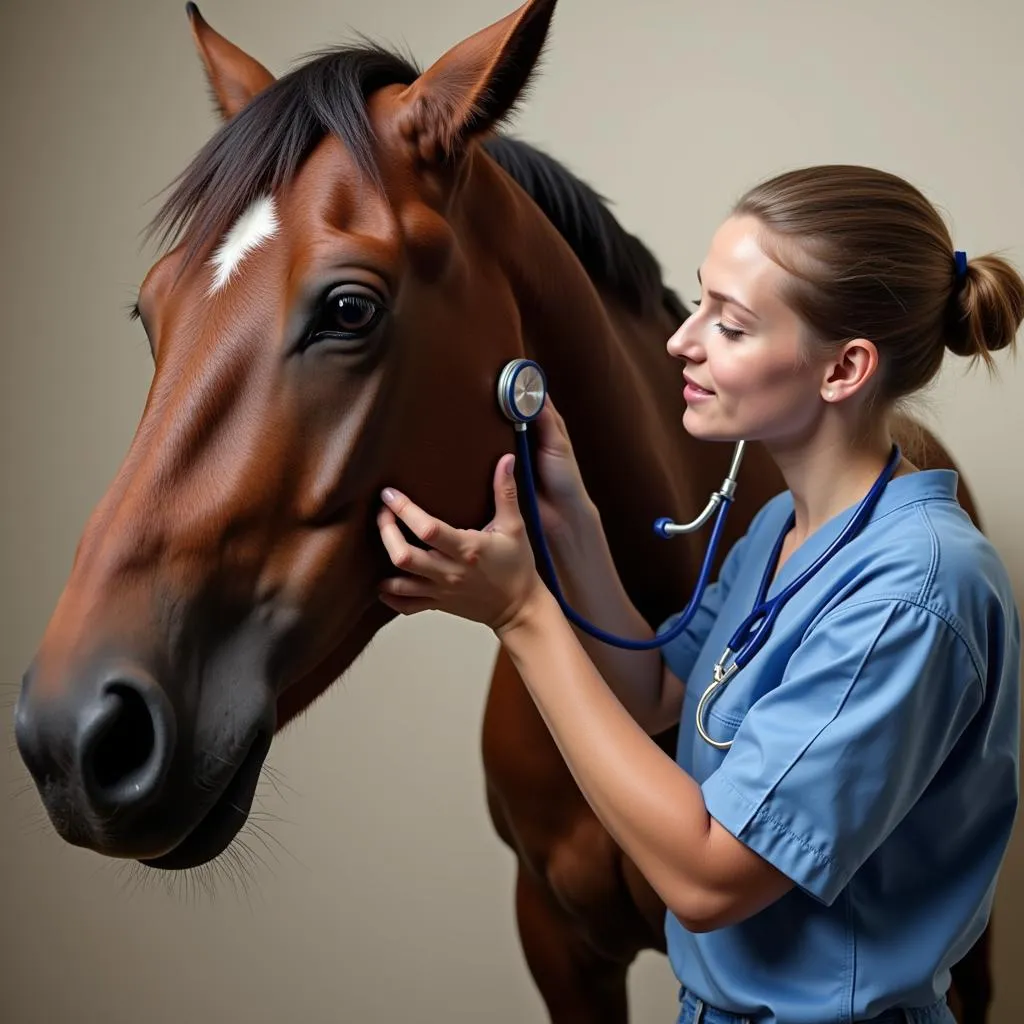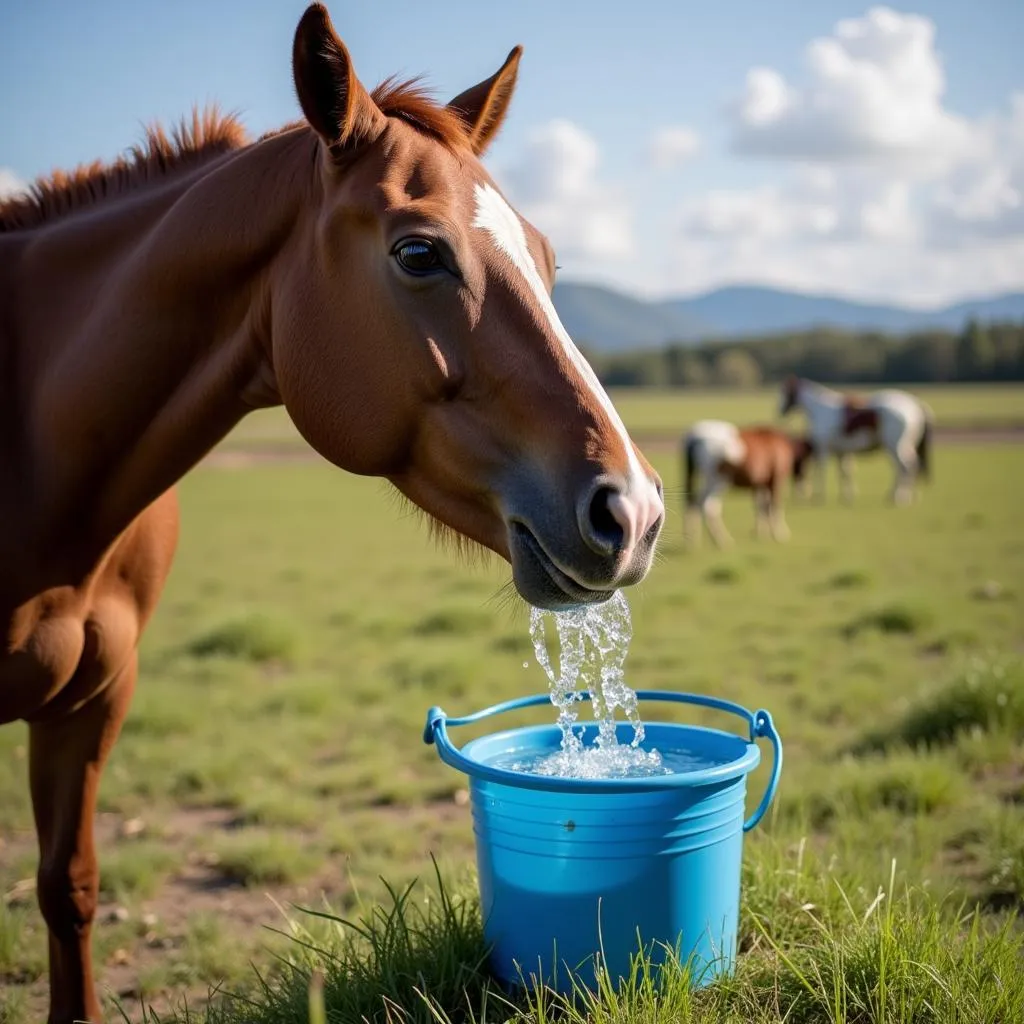Milkshaking in horses, also known as Synchronous Diaphragmatic Flutter (SDF), is a puzzling and often frustrating condition that can affect a horse’s performance and overall well-being. This involuntary contraction of the horse’s diaphragm and flank muscles typically occurs after exercise and is characterized by a distinctive “thumping” or “fluttering” motion in the flank area. While the exact causes of milkshaking are still being researched, it’s believed to be related to electrolyte imbalances and potentially underlying respiratory issues.
 Horse Showing Flank Fluttering After Exercise
Horse Showing Flank Fluttering After Exercise
Unraveling the Mysteries of Milkshaking: Causes and Symptoms
Milkshaking episodes can vary in severity and duration, with some horses experiencing brief, mild episodes while others exhibit prolonged and more pronounced symptoms. The most common signs of milkshaking include:
- Rapid, rhythmic contractions of the flank muscles: This is the hallmark symptom of milkshaking and can range from a subtle twitching to vigorous flapping.
- Elevated respiratory rate: Horses may breathe more quickly during and after exercise, even if they don’t appear to be struggling.
- Poor performance: Milkshaking can hinder a horse’s athletic ability, leading to decreased stamina and reluctance to work.
- Lethargy and muscle weakness: In some cases, horses may appear tired and weak after experiencing a milkshaking episode.
While the exact causes of milkshaking are not fully understood, several factors are thought to contribute to its development:
- Electrolyte imbalances: Horses lose significant amounts of electrolytes through sweat during exercise. Electrolyte imbalances, particularly low levels of calcium, chloride, and potassium, are thought to disrupt normal muscle function, potentially leading to milkshaking.
- Respiratory issues: Some research suggests that horses with underlying respiratory conditions, such as inflammatory airway disease (IAD), may be more prone to milkshaking. This connection may be due to the increased respiratory effort and altered breathing patterns associated with these conditions.
- Genetics: While not fully understood, there may be a genetic predisposition to milkshaking in some breeds or families of horses.
- Dietary factors: High-grain diets and inadequate access to salt may also play a role in electrolyte imbalances and increase the risk of milkshaking.
 Veterinarian Examining a Horse for Milkshaking
Veterinarian Examining a Horse for Milkshaking
Addressing Milkshaking: Diagnosis and Management Strategies
If you suspect your horse is experiencing milkshaking, it’s crucial to consult with your veterinarian to obtain a proper diagnosis and develop an appropriate management plan. Diagnosis typically involves:
- Physical examination: Your veterinarian will assess your horse’s overall health, listen to their heart and lungs, and observe their flank muscles for any abnormalities.
- Blood tests: Blood work can help identify electrolyte imbalances and rule out other potential medical conditions.
- Exercise testing: Your veterinarian may recommend an exercise test to observe your horse’s response to exertion and monitor for signs of milkshaking.
While there is no “cure” for milkshaking, various management strategies can help control the condition and minimize its impact on your horse’s health and performance:
- Electrolyte supplementation: Providing your horse with electrolytes before, during, and after exercise can help maintain electrolyte balance and reduce the risk of milkshaking episodes.
- Dietary adjustments: Your veterinarian may recommend changes to your horse’s diet, such as reducing grain intake, increasing access to salt, or adding a commercially available electrolyte supplement.
- Addressing underlying respiratory issues: If an underlying respiratory condition is suspected, prompt treatment is essential. This may involve medications, environmental management, or other therapies.
- Exercise modifications: Adjusting your horse’s exercise routine, especially during hot and humid weather, can help prevent electrolyte imbalances and reduce the likelihood of milkshaking.
Living with Milkshaking: Long-Term Outlook and Considerations
Managing milkshaking often requires a multifaceted approach and ongoing communication with your veterinarian. While some horses may experience significant improvement with proper management, others may continue to have episodes, particularly during periods of stress or intense exercise.
Here are some key considerations for living with milkshaking:
- Early recognition and intervention are crucial: The sooner milkshaking is addressed, the better the chances of successful management.
- Individualized management plans are essential: What works for one horse may not work for another, so working closely with your veterinarian to tailor a plan is vital.
- Patience and consistency are key: It may take time to find the right combination of management strategies that work best for your horse.
 Horse Drinking Water from a Bucket
Horse Drinking Water from a Bucket
Conclusion
Milkshaking can be a challenging condition, but with the right approach, it can be managed effectively. Understanding the causes, symptoms, and management strategies is essential for providing your horse with the best possible care. If you suspect your horse may be experiencing milkshaking, it’s crucial to seek veterinary attention promptly to discuss diagnosis and develop a customized management plan.
Remember, every horse is unique, and working closely with your veterinarian is vital for ensuring your horse’s long-term health and well-being.
FAQs
1. Is milkshaking painful for horses?
While milkshaking doesn’t appear to cause horses direct pain, it can be uncomfortable and contribute to fatigue and muscle weakness.
2. Can milkshaking be cured?
Currently, there is no cure for milkshaking. However, with proper management, many horses can live relatively normal lives and continue to perform athletically.
3. Are certain breeds of horses more prone to milkshaking?
While any breed can be affected, some research suggests that Thoroughbreds, Standardbreds, and Warmbloods may be more susceptible to milkshaking.
4. What should I do if I see my horse milkshaking?
If your horse exhibits signs of milkshaking, move them to a safe, quiet area, and contact your veterinarian immediately.
5. How can I help prevent milkshaking in my horse?
Ensuring your horse is properly hydrated, maintaining a balanced electrolyte intake, and addressing any underlying respiratory issues can help reduce the risk of milkshaking.
Need more information? Contact us!
Phone: +84 77 212 7271
Email: [email protected]
Address: QGM2+WX2, Vị Trung, Vị Thuỷ, Hậu Giang, Vietnam
We have a dedicated team available 24/7 to assist you!